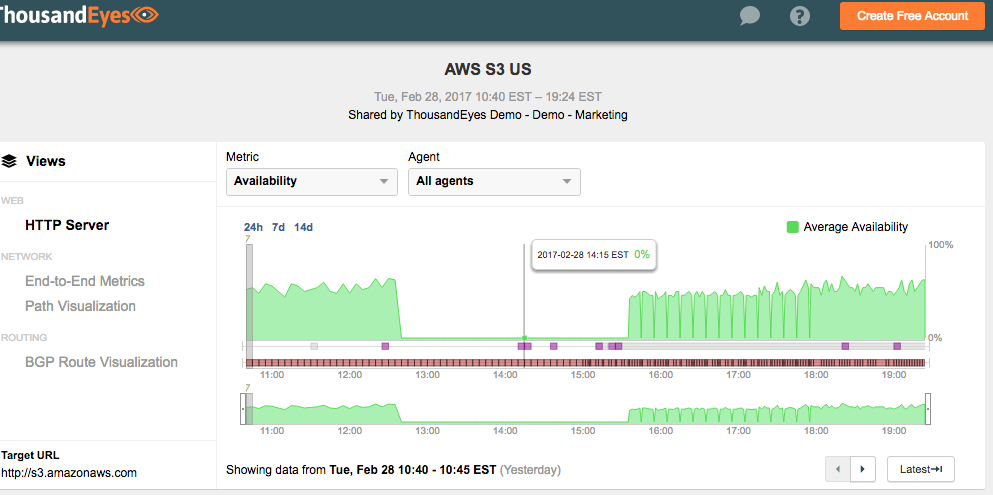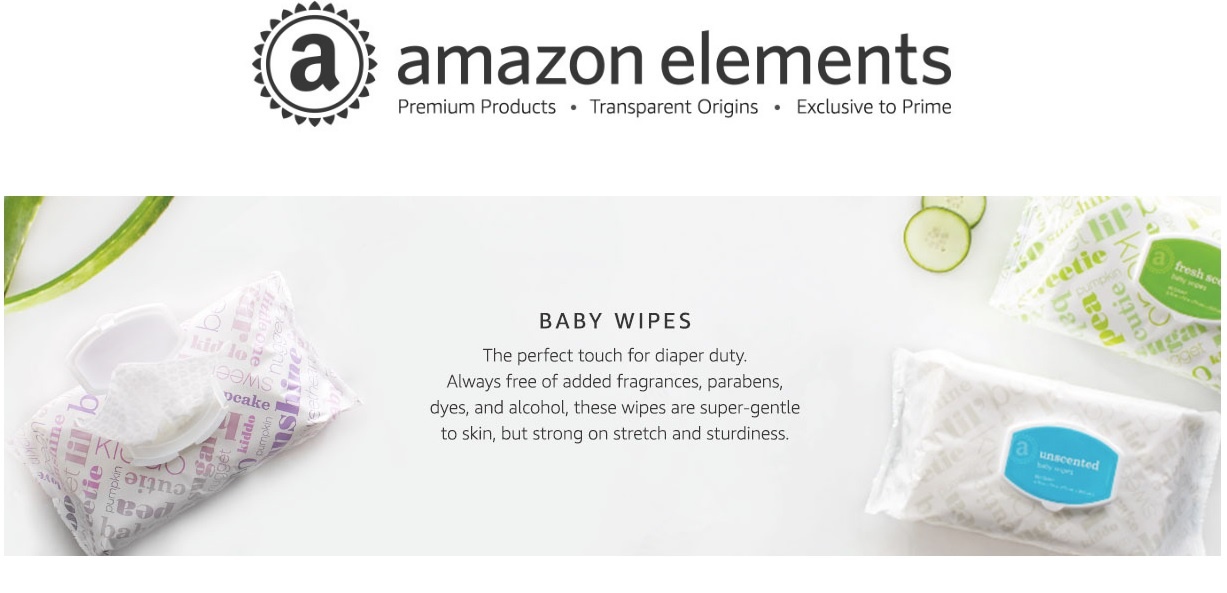In this Amazon Seller's Week in Review, Julie Spear, our Operations Manager, shares her take on recent news highlights and what these could mean for brands selling on the Amazon marketplace.
1. The Day Amazon “Broke” the Internet
Much has been reported about the fact that Amazon’s AWS cloud services experienced a disruption for about 4 hours on Tuesday, February 28. During a debugging process by the Simple Storage Service (S3) team, one command was entered incorrectly. This typo removed a larger set of servers than the team had planned and ultimately led to the service disruption that “broke the internet”.
One analysis of the impact of this disruption found that S&P 500 companies lost $150 million during this span of time. Web-monitoring company Apica reported that 54 of the top 100 e-commerce websites experienced a loss of 20% or more in performance and 3 retail websites went down completely. Among those that were not impacted by the disruption? Amazon itself. Business Insider explains the reason for this: “They have designed their sites to spread themselves across multiple Amazon geographic zones, so if a problem crops up in one zone, it doesn't hurt them.”
 Above: The time that AWS S3 went down according to ThousandEyes
Above: The time that AWS S3 went down according to ThousandEyes
2. Amazon Expands its Elements Brand
There was big news in the Vitamins & Supplements category last week as Amazon introduced new products to its private label brand, Elements. A brand that hasn’t seen anything in the realm of new products for some time, Elements now offers Vitamin D2, Turmeric Root Extract, Calcium Complex, and Vitamin K2 to Prime customers only. And, curiously, customers need to request an invitation to buy the products at this time.
Gaining customer trust is a significant challenge in the vitamins and supplements market as instances of fraud related to supplements containing contaminated ingredients or brands listing ingredients not actually contained in the products are in the news. Taking a “transparency” angle to marketing its new products, Amazon highlights their independent product testing, as well as the product origins and contents. The Elements brand page states, “We're committed to sharing the details of our product stories, from the reason each ingredient is included to where they are sourced. Openness on this level is unprecedented, but we see transparency as our responsibility to you.”
What is your take on Amazon’s marketing approach for Elements? Are they offering sellers a cue about an effective angle for gaining customer trust and loyalty?
 Above: Amazon Elements Category Homepage
Above: Amazon Elements Category Homepage
3. Ads Agencies Are Keeping an Eye on Amazon
During a recent call reviewing 4th quarter earnings Sir Martin Sorrell, CEO of the world's largest advertising group, WPP, shared what keeps him up at night. The answer may, or may not, surprise you: Amazon. As we shared in previous Week in Review reports, Amazon’s advertising business continues to grow. With 60% YoY increases, the “Other” category, which is believed to be comprised of Amazon’s advertising sales, earned $1.3 billion in revenue in 2016. Amazon’s unmatched data about customer search habits make it a real threat to Google and Facebook. Sorrell identified Amazon as a major threat to Google in particular, saying the most valuable space to advertise a product is in the space where a customer is actively searching for and is most likely to purchase that product. As this sector of Amazon continues to grow, what do you think the impact will be on sellers taking advantage of the Sponsored Products Ads program and/or AMS?
4. Green Fulfillment Centers
Last week Amazon announced a clean energy initiative involving installing solar panels on fulfillment centers. Aiming to install solar panel systems on the rooftops of 15 US fulfillment centers in 2017, Amazon identifies a commitment to “help generate more renewable energy at both existing and new facilities around the world in partnership with community and business leaders”. Centers in California, New Jersey, Maryland, Nevada and Delaware are included in the first phase of solar panel installation, with a goal of installing systems in a total of 50 centers worldwide by 2020. It’s estimated that such systems (depending on factors including time of year, etc) could generate 80% of a facility’s annual energy needs.
Until next week's round of Amazon Seller's Week in Review, join us in our private community for brand owners and Channel Managers on Facebook: Amazon Chanel Mastery for Brands. We share insider tips about e-commerce and selling on Amazon. This is where you can get to know us, and your peers, a little better.
.png)
